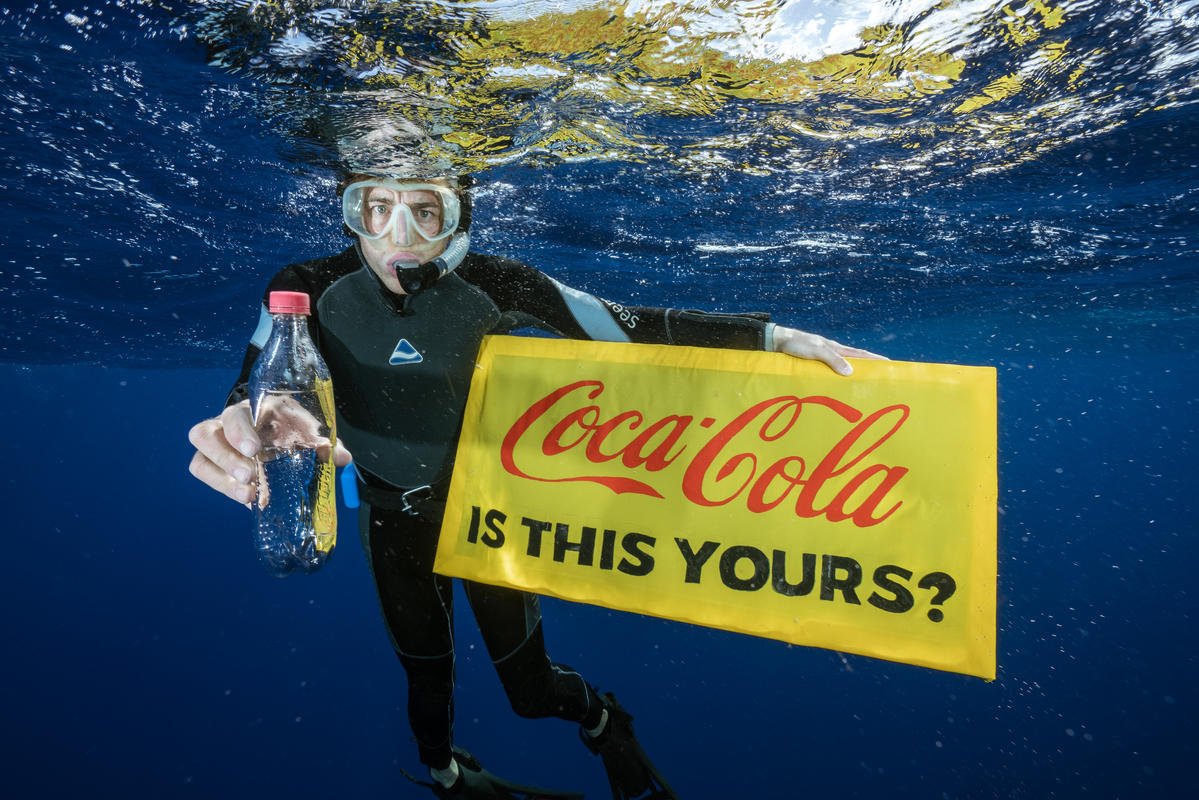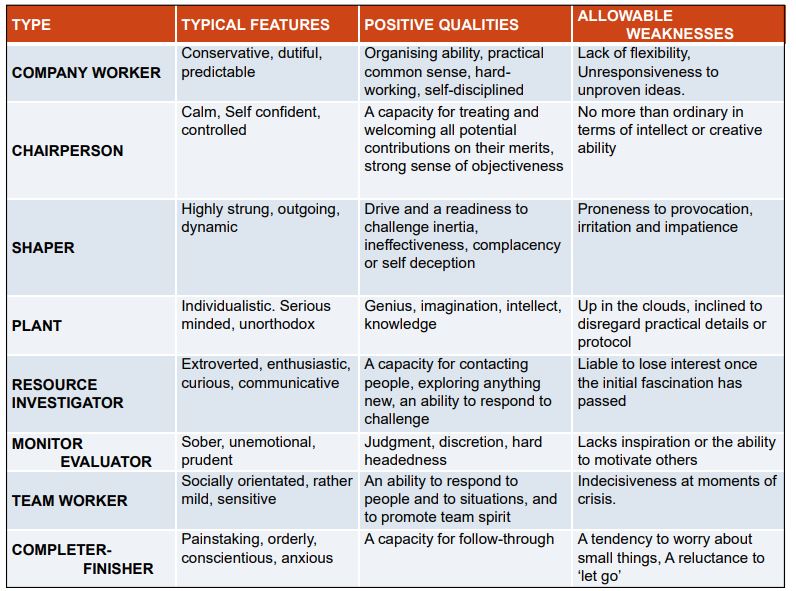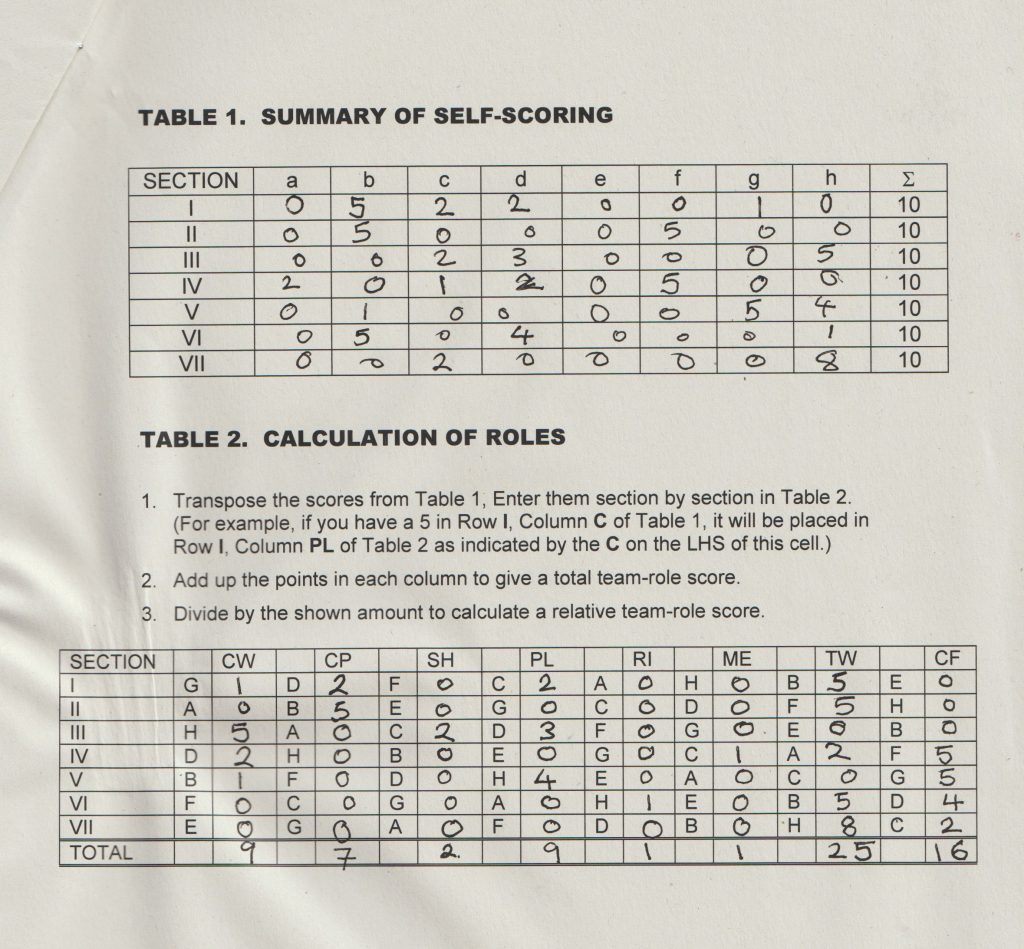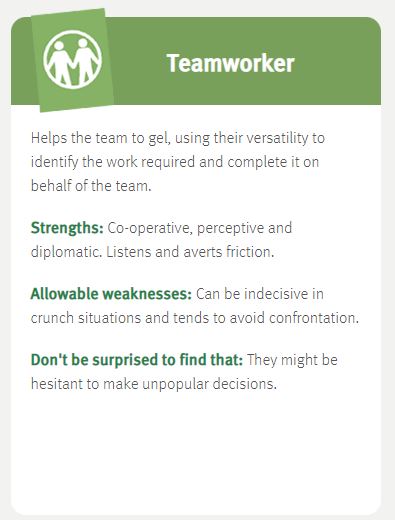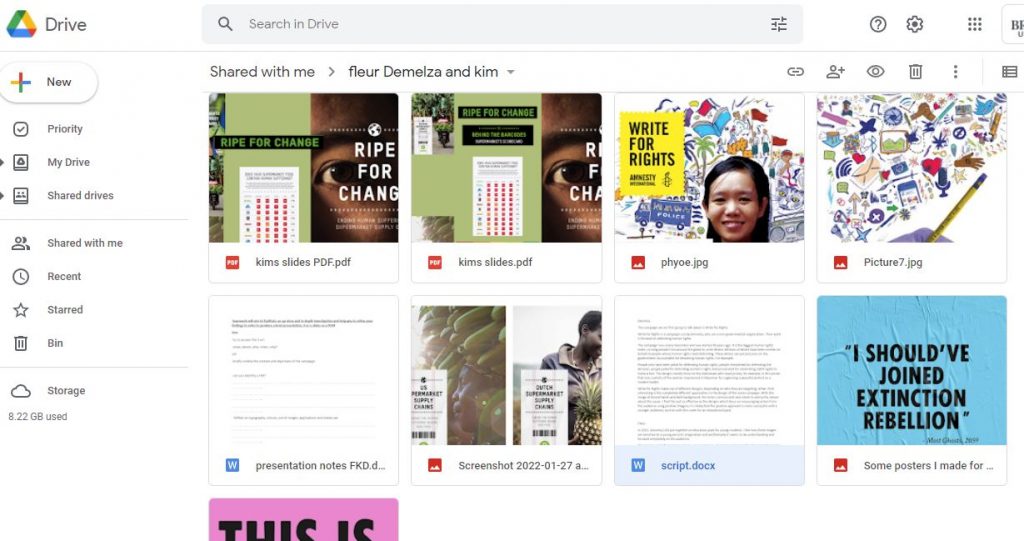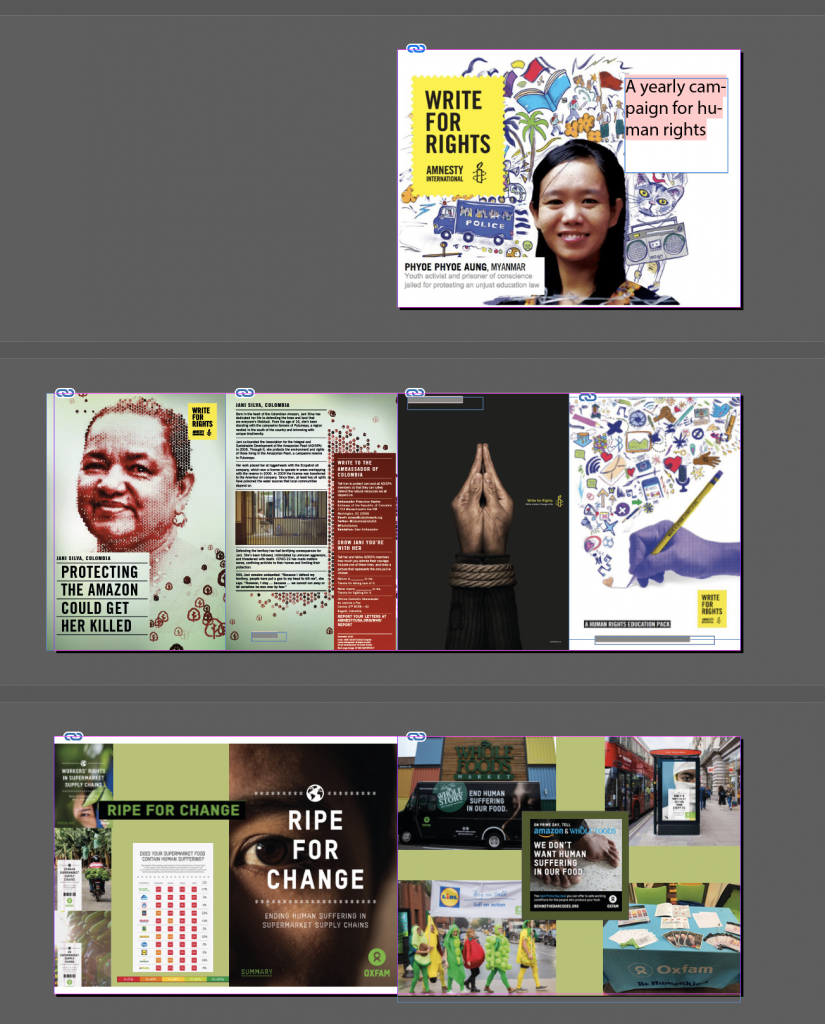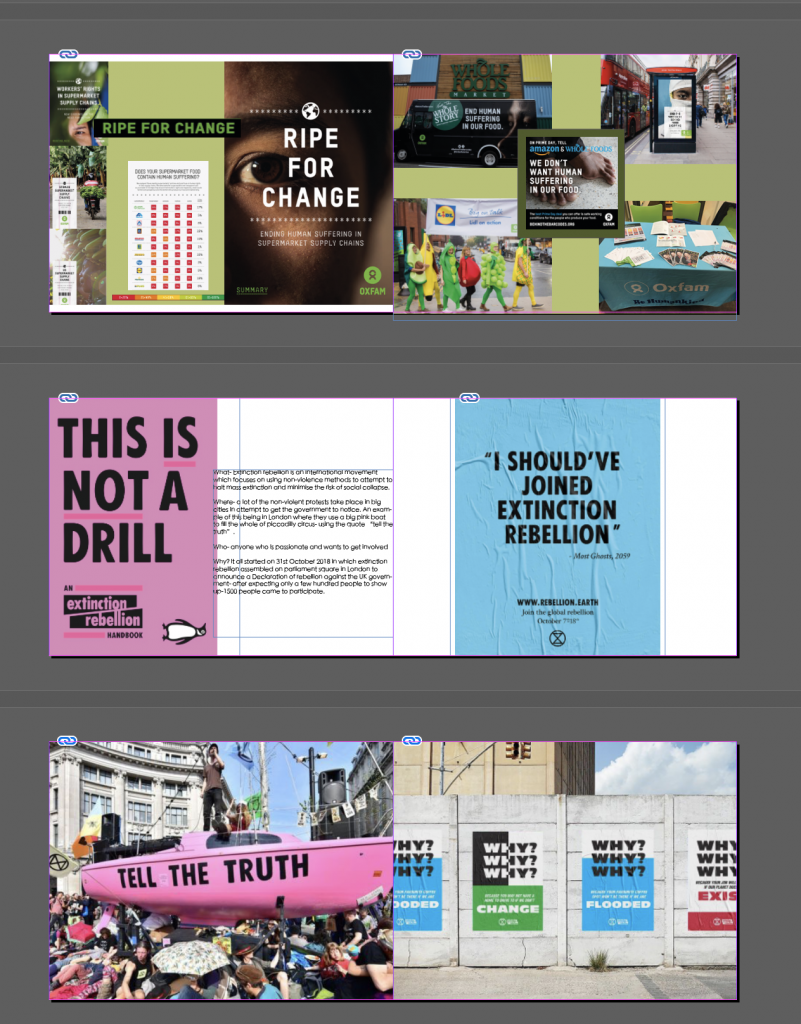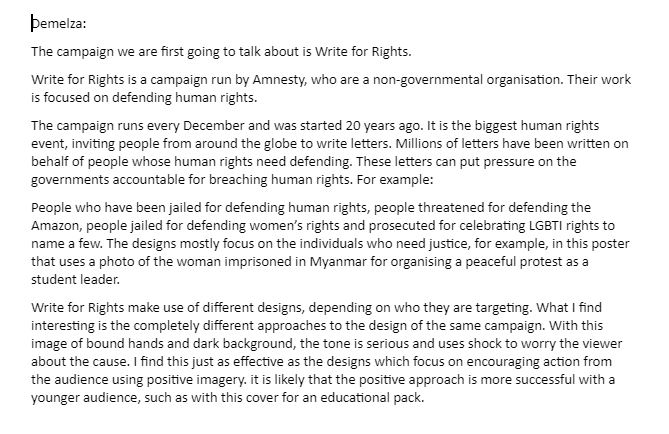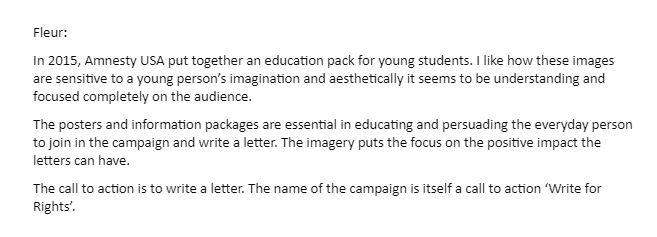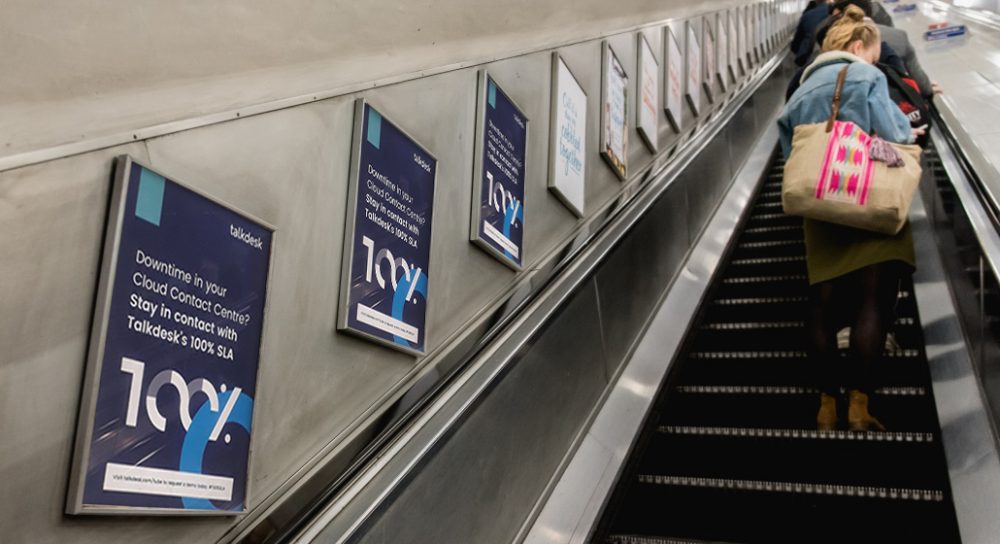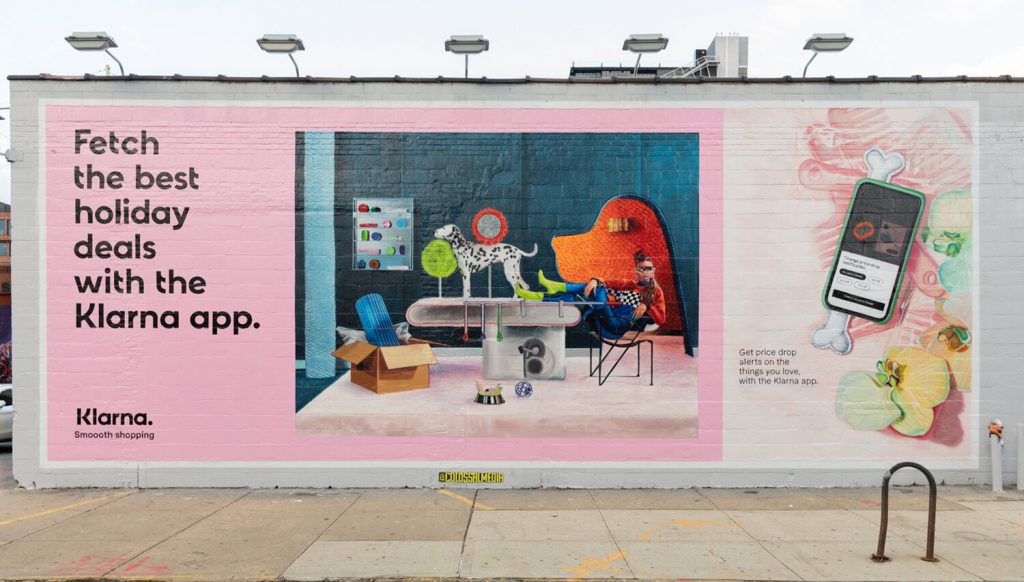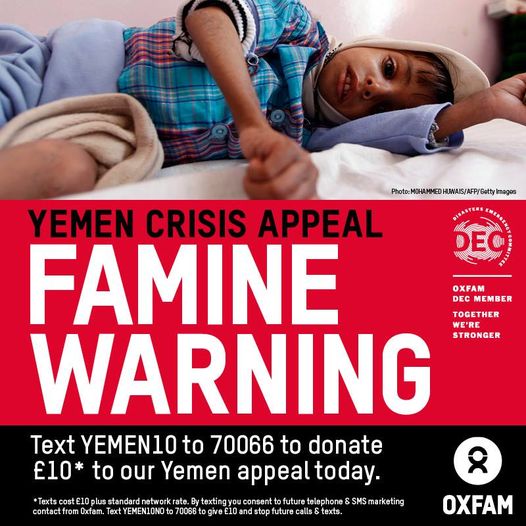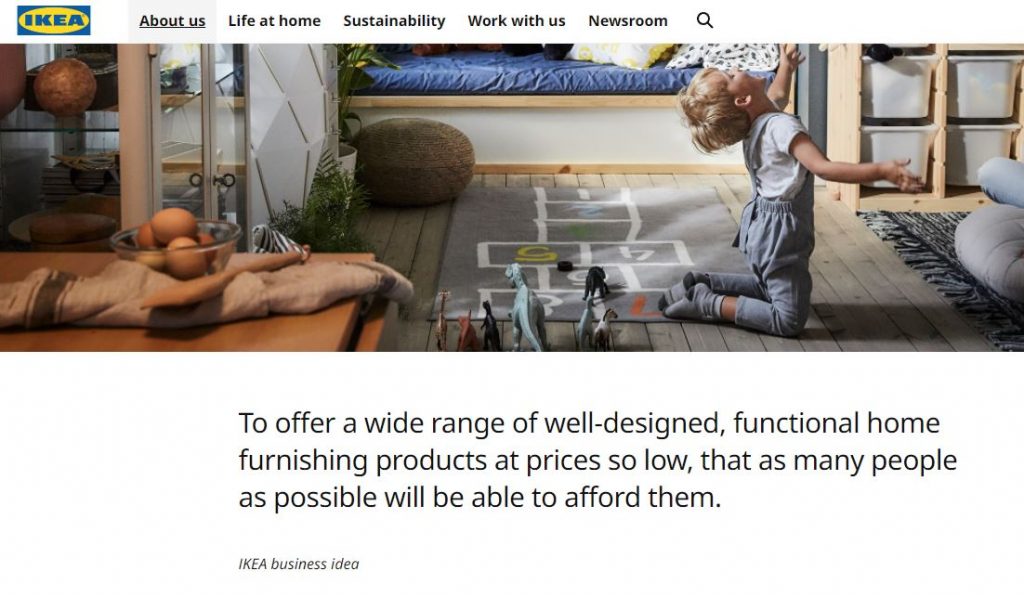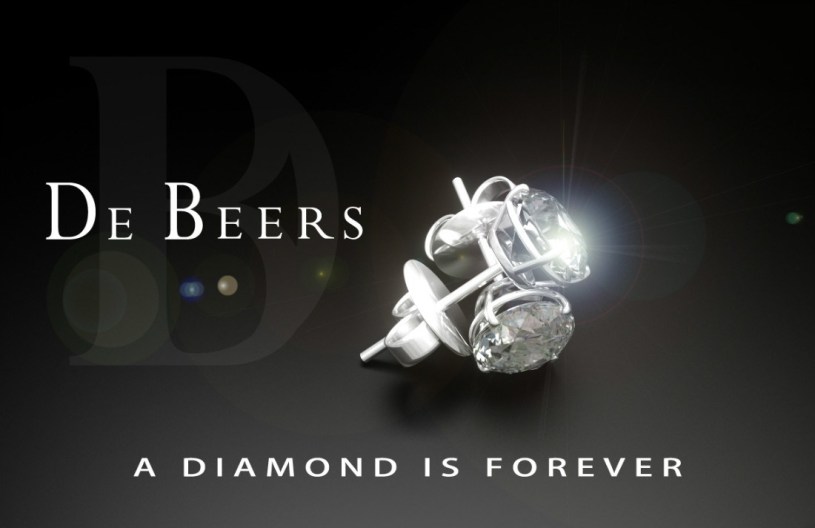
Our fragile Earth deserves a voice.
Anna Jones, Greenpeace
In today’s lecture, we met with our client:
Anna Jones from Greenpeace
Step 1 Define:
(Who, What, When, Where, Why, How?)
Who: Greenpeace Uk- Forest & Food Campaign. Greenpeace are a Non-Governmental Organisation (NGO). The aim of the campaign is to stop environmental destruction.
They were founded in 1971 and are a completely independent organisation. Their work is done by ordinary people alongside scientists.
Part of their work is:
- Putting consumer pressure onto companies
- Promoting solutions for a green and peaceful future.
- Taking direct action to prevent greater crimes taking place against our planet. For example, sending ships to disrupt whaling taking place.
Communication is key for making change happen. This is why graphic design is an essential part of the process.
Their audience is both the general public (creating awareness) and governments (putting pressure on them to act).
Their message goes out to Greenpeace members and non-members, such as journalists. This message is found on social media and traditional media.
Their campaigns can be focused on a particular company specifically, to get them to change. By doing this, they are getting companies to take the lead and other companies then follow them.
An example of this is with the campaign against Coca-Cola. (plastic bottles in oceans)
Subverting their brand to get consumer’s attention. The aim was to get Coca-Cola to reduce and use recycled materials. They achieved this through social media and guerilla marketing- directing communication at their head offices.- To bring home what is happening to our oceans.

They took a similar approach to Sainsbury’s- subverting their brand. This was a successful campaign, getting them to reduce their plastic use over the next 50 years.

Mattel- dolls company- destruction of rainforest. Using a cheeky brand attack was a successful approach.
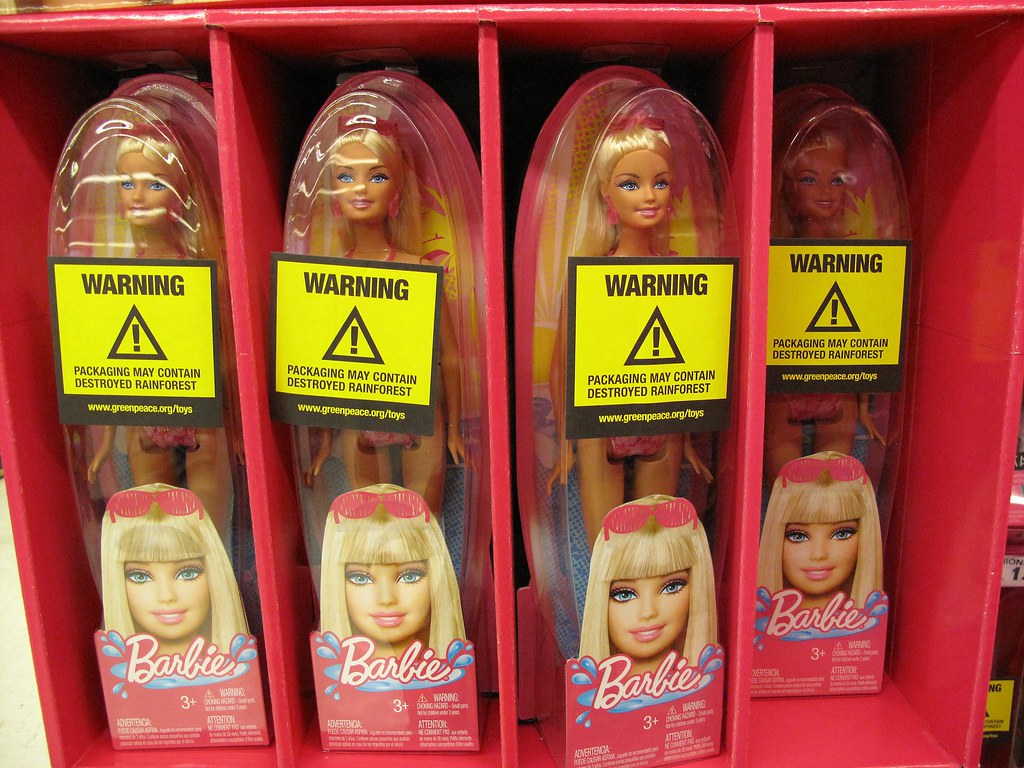
They campaigned against Head & Shoulders’ use of unsustainable palm oil.

Subvert= To undermine the power and authority of a system.
Flexitarian= Someone who is reducing their consumption of animal products.
Wasteminster- was aimed at the government, using animation to bring to life what’s happening by dumping plastic waste at Downing Street. This sent a clear message that they have the wrong policy by dumping waste in Turkey and other countries instead of dealing with it appropriately.
Getting the media coverage gets more people to sign the petition and write letters to the Prime Minister.
Visual storytelling moves people to show them what is happening.
Images speak much louder than words.
Anna Jones, Greenpeace
Barclay’s Bank- oil pipe lines.
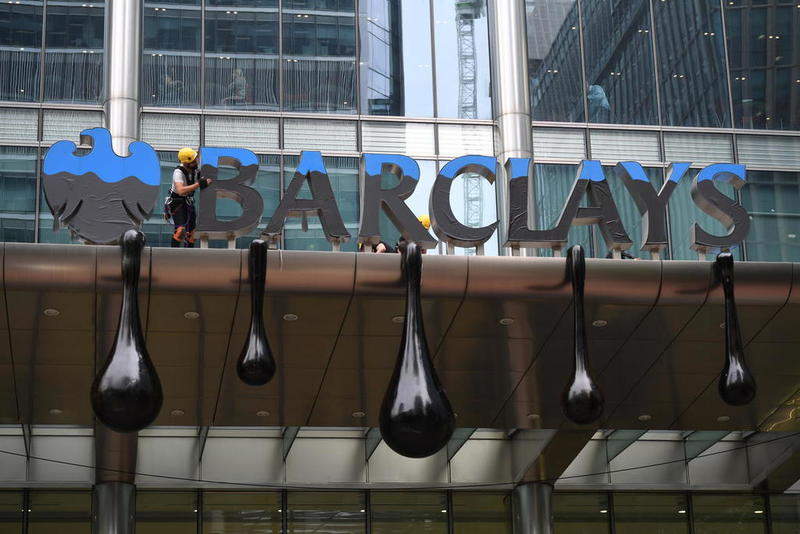
Greenpeace made bespoke oil globules at the head quarters of Barclays.
An activist climbed Nelson’s column in London- working with an artist to talk about air pollution. This was successful in its aims. Activists are also known to climb buildings, for example to display a message to decision makers.

‘Ditch Diesel’ used the example of a real child who suffers with asthma, to express the effect on human health.
Campaign against Oreo had an activist dress as an Orangutan outside the Oreo headquarters to reference forest destruction in Indonesia.
#Stopcambo oil well to send a message to Boris Johnson.
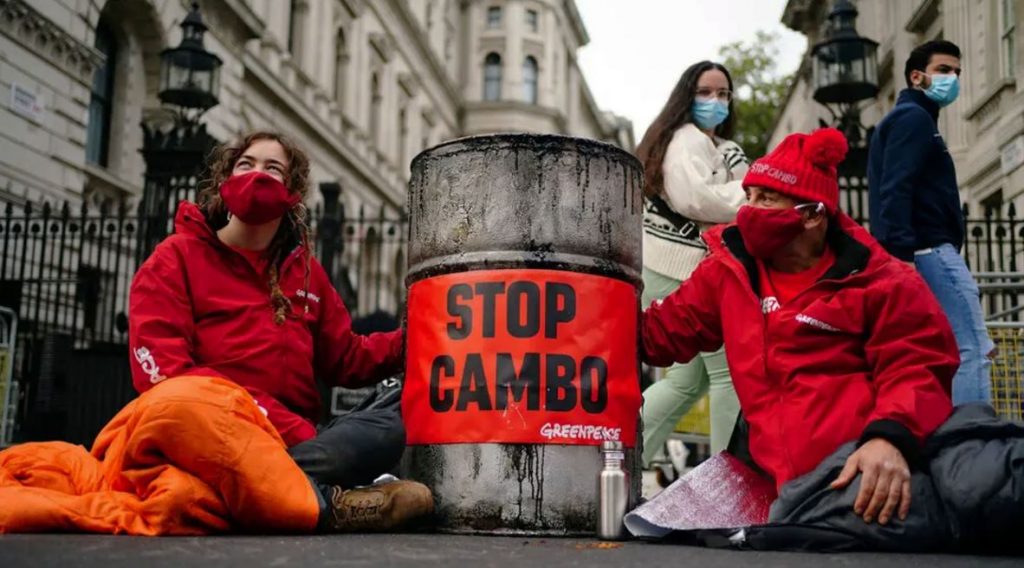
Online engagement highlighting Greta Thunburg.
Looking on Greenpeace’s Instagram can give some inspiration on past campaigns. Cheeky ways to subvert a message are effective. For example, using messages the government themselves made, but turning the messages against the people who made them originally.
The Brief
A campaign to end industrial meat and restore forests.
- Forests are our life support system- they store carbon and draw down carbon from the atmosphere.
- Destroying forests releases carbon, for example in Brazil.
- We need more forests today if we are going to keep our climate in balance.
- Industrial meat is the biggest driver for Amazon/ South American forests.
- Soya beans are planted to feed animals and land is cleared to graze cows.
- In the UK we eat twice as much meat and 3 times as much dairy as the global average.
- UK imports tonnes of soya every year. Imported by Cargil- who are a huge forest destroyer. JBS is the global meat giant. They participate in land-grabbing and human rights abuses.
- Tesco buy from JBS subsidiaries. It’s products directly link to deforestation. Tesco must drop JBS- ending sales of factory-farmed meat.
- Tesco- our biggest supermarket- need to put the planet before profit.
- They say they have not heard this demand from their customers. This is where customers need to speak- to put pressure on them. Greenpeace want Tesco to know that the public want them to change their suppliers.
- The main message is ‘Tesco destroys forests.’
- This campaign is to reach people who shop regularly at Tesco, or specifically to focus on young families and millennials. We can emphasise that this is the world their families are living in.
- Restore the balance of what the planet can sustain.
- Greenpeace might subvert the brand’s tagline or make a new one. There needs to be a CTA and the key message within the design.
- We could come up with a campaign poster, short animation, social media post or guerilla style activity- attacking the brand and attracting media attention.
After delivering a fantastic and informative presentation, Anna allowed us some time to prepare questions about the brief. We worked in groups to think about what questions we wanted to ask. I was surprised that each group had very different questions in mind.
As a group, Zafri, Grace and myself came up with the question:
‘Given our intended audience, is a shocking campaign poster/ use of shocking imagery always effective? for example, to be viewed by young families.’
Anna explained that sometimes shocking imagery can have the opposite effect- and actually put people off. That there is a fine line to be recognised. If this type of imagery is used- it needs to be balanced with a positive message. On the Greenpeace website, we can find archives of previous campaign designs.
In answer to some of our classmates questions, Anna said the following:
We don’t need to give every part of the story. We could boil it down to Tesco doing business with JBS. There doesn’t need to be deep explanations- it’s OK to simply make the point that Tesco have made a promise that they aren’t keeping. (The promise being that they would get deforestation out of their supply chain.)
We can use the Tesco typeface, their logo and advertising phrases such as ‘Tesco food stories.’ Subverting the logo itself is so strong.
Using the Greenpeace logo is not essential.
The Wasteminster campaign video has been incredibly powerful because it allows Greenpeace to tell the whole story. Sometimes direct action really makes a difference.
‘It’s great to use hard-hitting storytelling.’
We need to distract people from buying meat. If you buy you are contributing to deforestation.
